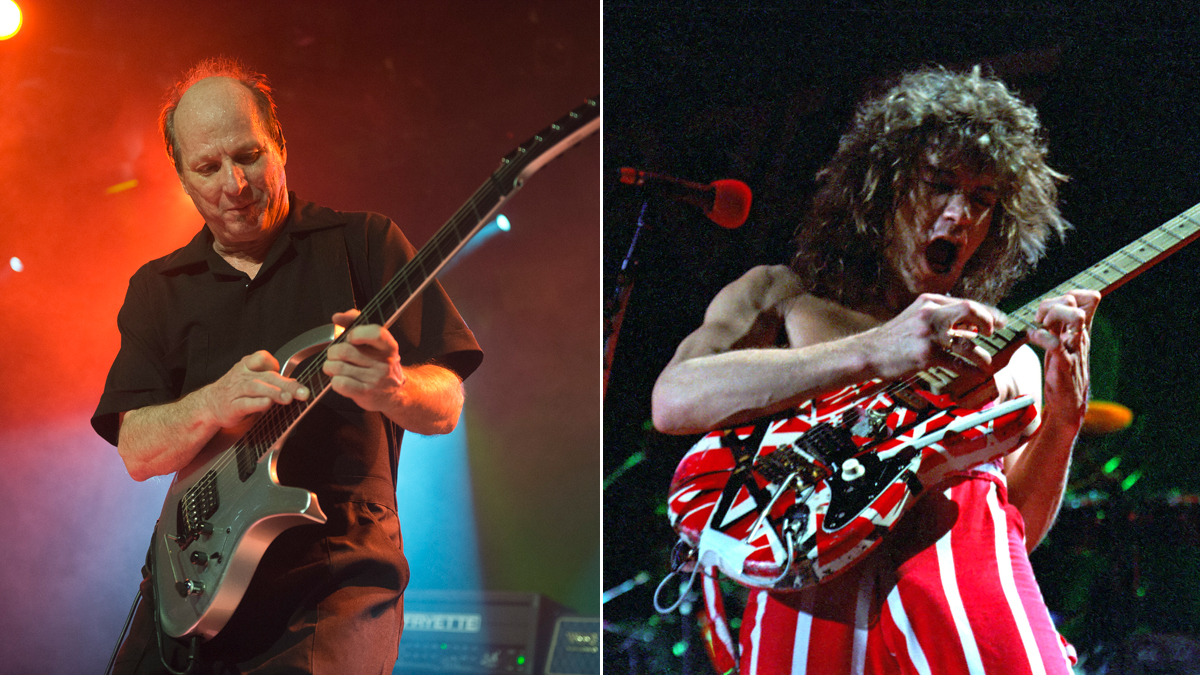
It goes without saying that Eddie Van Halen redefined the way in which people – both fans and professional musicians alike – view the electric guitar. One individual in particular who falls in the latter camp is Adrian Belew, who recently declared that Van Halen took the guitar, and the concept of tapping in particular, “to the next level”.
Speaking to Ultimate Classic Rock, Belew recalled the first time he saw a young “unsigned” Van Halen perform live, revealing it was during a time when he and the Bears’ Rob Fetters were attempting to pioneer their own style of prototype fretboard tapping – a relatively new technique that, at the time, didn’t have a name.
“I had just started playing this thing where you hold a note down and then you do this,” he said. “It’s called tapping, but back then we didn’t have a name for it. Rob Fetters and I were the only two guys we knew who were doing it.
“It was on a Steely Dan record [Kid Charlemagne, from 1976's The Royal Scam], and I figured out, that’s how [Larry Carlton] must have done it. I thought, ‘Okay, I’m going to start doing that.’ Rob started doing it, too.”
However, they’d only get so far in their tapping journey before coming across a young Van Halen who, by Belew’s own words, was already a master of the blossoming technique and utilizing it better than they were.
“We walked in and there’s Van Halen, unknown, unsigned, no one knew them, playing like crazy on stage,” Belew continued. “Eddie Van Halen is doing that all over the neck of the guitar. We looked at each other and said, ‘Hey, he’s doing that thing that we do!’
“We laughed, and we said, ‘And he’s doing it better than we do!’ Because he had already taken it and advanced it to the next level. Good for him.”
All the latest guitar news, interviews, lessons, reviews, deals and more, direct to your inbox!
Belew, whose credits include King Crimson, Frank Zappa and David Bowie, then acknowledged Van Halen’s prophetic impact on the guitar world, saying the tapping technique he championed “became something that a million different young guitar players tried to do since then”.
The only thing as iconic as Van Halen's playing is the red-black-and-white striped aesthetic of his Frankenstein guitar – a design motif that David Lee Roth recently claimed was his own idea.
This tale was, however, rebutted by EVH guitar expert Chris Gill, who noted three key factual errors that render Roth's recollection a "complete revisionist fabrication".

Matt is the GuitarWorld.com News Editor, and has been writing and editing for the site for five years. He has a Masters in the guitar, a degree in history, and has spent the last 19 years playing everything from blues and jazz to indie and pop. During his GW career, he’s interviewed Peter Frampton, Zakk Wylde, Tosin Abasi, Matteo Mancuso and more, and has profiled the CEOs of Guitar Center and Fender.
When he’s not combining his passion for writing and music during his day job, Matt performs with indie rock duo Esme Emerson, and has previously opened for the likes of Ed Sheeran, Keane, Japanese House and Good Neighbours.
